I gripped the controls of the vehicle. My mind felt steady despite the chaos that surrounded me. Rain fell in sheets as I revved the engine hard. The ground trembled beneath the raw of 560 horsepower. So this is what it feels like to be God? The thought vanished as quickly as it appeared. Nearly 80 teams, representing every corner of the globe, surrounded us. To our left were the Germans; their once prominent flag now hung limp, drenched into submission by the relentless downpour. To our right were the British; their slogan featured proudly on the side of their vehicle: “Boys will be boys”. We’d be seeing plenty of them in the weeks to come.
A tall, bearded man walked out in front of us. Matt. He would, no doubt, offer some words of encouragement. It’s the least that he could do before releasing nearly 250 untrained drivers onto the streets of India.
He lifted a mic and the arena filled with the boom of his voice. “It’s going to be a long run. Most of you will hate it. Try not to die!”
Powerful words. I indexed his advice in the deepest part of my mind. Something told me that we were going to need it.
The gun fired and I hit the accelerator with everything I had. Unfortunately, the 560 horsepower was divided evenly among all 80 teams. Our seven-horsepower auto-rickshaw let off a high pitched squeal and leapt forward like an overweight toddler chasing an ice cream truck.
Within moments, madness descended on the narrow ramp that separated the starting arena from the manic streets of Shillong. Was this bottleneck set up for the purpose of inciting mayhem, or for the safety of the traffic that lay beyond it? I brushed the thought aside. I’d have plenty of time to curse the organizers later. The team in front of us stalled, and I took the gap. We flew over the ramp, onto the streets, and came face to face with our first major obstacle: a gradual incline in the road.
We were instructed to warm our engine prior to the start of the race. These horribly temperamental three-wheelers require at least 30 minutes notice before being driven. Being the meticulously organized team that we were, we found ourselves waterproofing the roof and looking for gas right up until the last second. In our rush, we hadn’t started our rick until moments before the gun fired. Now, with an ice-cold engine, we would attempt to climb this winding hill to the top of the city.
I glanced over my shoulder. My wife, Amy, clung to the back seat. The look on her face sent a clear message, “keep your eyes on the road!” To her left, my sister, Bronwyn, laughed hysterically. The wild look in her eyes made my heart skip a beat. We’re all insane, I realised. I returned my attention to the challenge that lay before us, said a prayer and then floored it. Our rickshaw responded with a pained moan, and we began our ascent.
The broken down vehicles of those who had gone before us littered the roadside. Within minutes, we had slowed to a crawl and our steed was shuddering as it strained its way forward. Still, we pushed on. Inch by painful inch. Within 20 minutes our fate seemed certain; we weren’t going to make it. Then, just as we were losing hope, the hill relented and we found ourselves at the summit. Relief flooded my body as I took in the view.
Just 3499 km to go.
Welcome to The Rickshaw Run
Last month, we participated in an adventure of epic proportions: a 3500 km trans-Indian race in a seven-horsepower auto-rickshaw. The Rickshaw Run stretched the full length of the country, from the northeastern province of Meghalaya to the southern province of Kerala. For team Professional Vagabond, the 3500 kilometers that lay between these two points was a constant battle: a relentless cycle of breakdowns, wrong turns, manic roads, and disturbing hotels.
The experience came with tremendous highs and horrendous lows. We drove through breathtaking natural beauty, and we watched grown men poo on the freeway. We met wonderful people, and we fled from mobs. We ate incredible food, and we filtered human excrement from our drinking water. Things seldom went according to plan, yet we somehow managed to reach the finish line within the allotted 15 days.
Now, let me take you on a journey through the bowels of India. Here are the seven most memorable parts of our trip.
#1. Our Steed
Auto-rickshaws are a common form of public transport in India. The small three-wheelers have a top speed of around 45 km p/h and are ideal for zipping through chaotic city streets. They are also incredibly easy to flip, prone to breakdowns, amazingly uncomfortable, and offer absolutely no protection in the event of an accident. In short, they are ideal vehicles for anyone looking for an adventure.
We pushed Ricky Reliable, as she was affectionately known, to the limit. She rewarded our efforts with approximately 45 breakdowns. Here’s a short list of things that went wrong:
- The engine fell out
- The carburetor packed up
- The gearbox failed
- The petrol line snapped
- The exhaust rattled off
- The tires burst
- The clutch plate broke
- The oil leaked incessantly
- All electronics stopped working
To be fair, our rickshaw did have one reliable feature. She had the uncanny ability to time her breakdowns for the most inopportune moments imaginable. For example, the engine fell out just 30 minutes before nightfall, more than 100 km away from the nearest city. The resultant night drive was utterly hair-raising!
On the bright side, due to their popularity, finding spares was pretty easy. Just kidding. Our auto was an outdated petrol model that had long since been discontinued. Amazingly, we failed to secure spare parts until the second last day of the run. When we broke down, we had no choice but to fix the problem with what we had on hand.
We used bubble gum to plug oil leaks. We repaired broken pipes with ice cream sticks and electrical tape. We used bottle caps and cable ties to hold the exhaust in place. When the engine fell out, we tied it back with string. After 15 days on the road, our engine was held together by a beautiful assortment of cable ties and litter. Our repairs were so beautiful, in fact, that they won an award at the finishing party.
#2. Manic Roads
Driving through India isn’t for the faint of heart. If we were driving an armored Humvee, our experience might have been less terrifying. Our underpowered three-wheeler, however, did little to calm our nerves. The broken roads, frenzied drivers, exotic traffic, and dangerous terrain left no time for complacency while behind the controls.
Imagine sharing a simple road system with 1.2 billion people. That mental picture is exactly what it’s like to drive in India. In the cities, thousands of trucks, cars, rickshaws, scooters, and pedestrians scurry over every inch of tarmac, frantically attempting to reach their destination as quickly as possible. Road rules exist, but I doubt that the general population is aware of their existence.
The only way to survive the mayhem is to embrace it. Missed your turnoff on the freeway? No problem! Just turn around and drive back into the flow of oncoming traffic. Need to overtake a slow-moving truck? Simple! Ramp onto the slightly less congested sidewalk. In our experience, anything is permitted provided you sound your horn as you do it. Over the course of The Rickshaw Run, we developed several questionable driving habits. I hope, for everyone’s sake, that none of them stick when we return to the western world.
The presence of camels, cows, buffalo, goats, sheep, dogs, monkeys, wild pigs, and snakes added an entirely new dynamic to the insanity. The roads themselves often featured potholes big enough to swallow us whole. Mix all of this together and you have the perfect recipe for a nervous breakdown. Fortunately, though we came close on several occasions, this is the only breakdown that we were able to avoid.
#3. Wrong Turns
We got horribly lost on more than one occasion. During these periods of disorientation, we often ended up stumbling upon places that we would never have seen from the seat of a shiny tour bus. My favorite wrong turn took place somewhere between Malda and Runiganj. One moment we were on a major road, the next we were driving through a village that looked like something out of the Jungle Book. Men were plowing their fields with bulls and buffalo, women were balancing jars of water on their heads, and children were harvesting an unknown plant from the rivers.
We ended up driving along a narrow dirt road, separated from the river by a steep embankment. After coming close to tumbling down the hill on many occasions, we decided to make a 138-point turn and go back the way we came. The locals, who had probably never seen westerners before, seemed to think that we were the funniest group of idiots on the face of the planet. They laughed, pointed, and offered help as we struggled to perform our about-face. Not wanting to see our rick at the bottom of the river, we politely declined their offers.
#4. Friendly Locals
As it turns out, a team of clueless westerners driving a brightly colored auto-rickshaw is at the top of a long list of things that excite Indian people. As we drove through villages and cities, locals would stare at us openly, in utter disbelief. They would often chase us down the street, yelling questions and instructions as they pursued.
Whenever we stopped in populated areas, which are the only kinds of areas in India, we instantly attracted a swarm of excited locals. We gave out autographs, posed for pictures, and politely accepted a variety of gifts. When our stops were involuntary, which was the case more often than not, everyone would offer to help. We quickly learned that, though their intentions were good, they knew less about our engine than we did. We often paid for these free repairs with catastrophic engine failure two kilometers down the road.
On the whole, the people were unbelievably kind. One of the most memorable displays of kindness came during our stop in Cuttack. It was around the halfway point, and we were experiencing serious engine problems. While we were sitting on the side of the road, feeling sorry for ourselves, a man named Locan came out of his shop and asked if there was anything that he could do to help. When we told him what we needed, he canceled his appointments, closed his business, and spent the next two hours driving me around the city. Once we had resolved the problem, he gave us his phone number and told me to call him if we needed anything else. Needless to say, I was blown away by his generosity.
#5. Fellow Runners
We shared this experience with almost 250 fellow Rickshaw Runners. With so many teams making their way to the same destination, we’d often bump into them on the road (sometimes literally). We’d exchange war stories, share advice, and sometimes help each other out of trouble. When our engine fell out, for example, two other teams escorted us to the next city to ensure that we didn’t end up stranded after dark. We also enjoyed a bit of friendly competition, specifically with the Germans. The camaraderie was outstanding.
A shared Whatsapp group strengthened the shared experience even further. On the rare occasion when we had access to an Internet connection, we would gather around and catch up on the antics of the 80 other adventurers scattered around the country. Bandit attacks, extreme breakdowns, major accidents, and close calls with the wildlife were all commonplace. Sometimes these stories would help us to realize that things could, in fact, be much worse.
#6. Accommodation
We concluded most days with the same ritual. After 16 hours on the road, we’d limp our broken rickshaw into a small town or village and begin the search for accommodation. Needless to say, our route seldom took us through tourist-ready areas, and the “hotels” that we stayed in were adventures in and of themselves.
Some of our overnight stops would make even the most hardened budget-backpacker gag. We shared our rooms with wildlife of every kind, from cockroaches and spiders to lizards and frogs. On the first night of the run, our hotel room featured a nest of giant ants inside the front door. Another hotel housed a brave lizard who, being unimpressed with our invasion of his living quarters, climbed onto the ceiling above me, and pooped directly into my ear.
Hotel room? 800 rupees.
Ear buds? 60 rupees.
The look on Amy’s face when she finds a giant ant nest in the door? Priceless.
#7. Incredible Food
Amy and I aren’t overly enthusiastic about spicy food. For me, a dash of pepper is usually enough to produce beads of sweat on my brow. This weakness, of course, led to concerns regarding the famous Indian diet of curry and raw chilies. While these concerns weren’t entirely unfounded, the food turned out to be one of the best parts of our trip. To say that it was incredible would be a gross understatement.
Most of our meals were made up of two primary components: unleavened bread and curry. Both of these components were mouth watering, but the bread changed my life. At the end of a hard day, I would often drown my sorrows in copious amounts of butter naan, parathas, and chapatis. They somehow soothed my soul and let me know that everything was going to be okay.
North Indian chai (tea) was another unexpected highlight. I’m not usually a tea drinker, but I consumed a disturbing quantity of chai during the run. If I’m not mistaken, the creamy delight known as chai is made from angel milk and unicorn tears. Unfortunately, the language barrier prevented me from ascertaining the exact recipe.
Bonus: Morning Poos
One of the few advantages of waking up at 4:30 in the morning is that you get to experience the beauty of dawn from the road. About half way through our trip, we began noticing scores of locals squatting along the side of the freeway, enjoying the majesty of the sunrise, with us. It took a while for us to catch on, but ultimately the look of serenity on their face gave them away. Under the traditional lungi (man-skirt), they were taking care of business, so to speak.
I realize that many of these areas are extremely rural and lack plumbing. Even so, I felt that there were better places to pop the morning squat than on the side of a busy freeway. Don’t get me wrong; I enjoy good company as much as the next guy, but what’s wrong with having a chat over a cup of chai or a game of Pallanguli? On several occasions, I considered suggesting that they move to the bushes behind them, butt I thought better of it.
As I hung out of the side of our rickshaw and snapped pictures, they looked me in the eyes and smiled. They seemed to take comfort in the knowledge that they didn’t have to endure the terror of pooping alone.
Your Turn!
The Rickshaw Run was everything that we hoped it would be. It was tough, but that’s the very thing that made it so rewarding. My only regret is that we didn’t have any legitimate reason to sleep on the side of the road. In this way, our uncanny ability to repair any engine fault with litter was a double-edged sword.
Now it’s your turn. If you’re thinking about getting out there and having an adventure, I’d encourage you to stop thinking, contact The Adventurists, and book your place at the next run. We booked our spot on a whim, and it was one of the best decisions we’ve ever made.
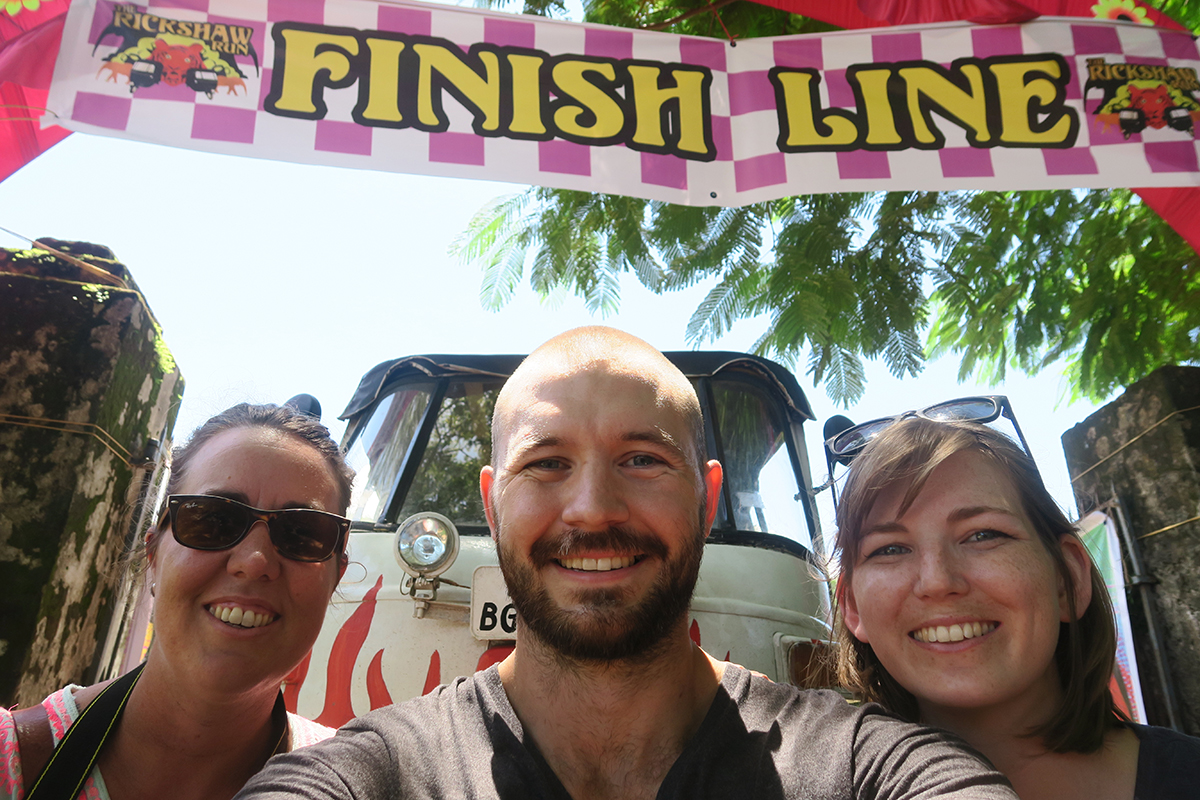

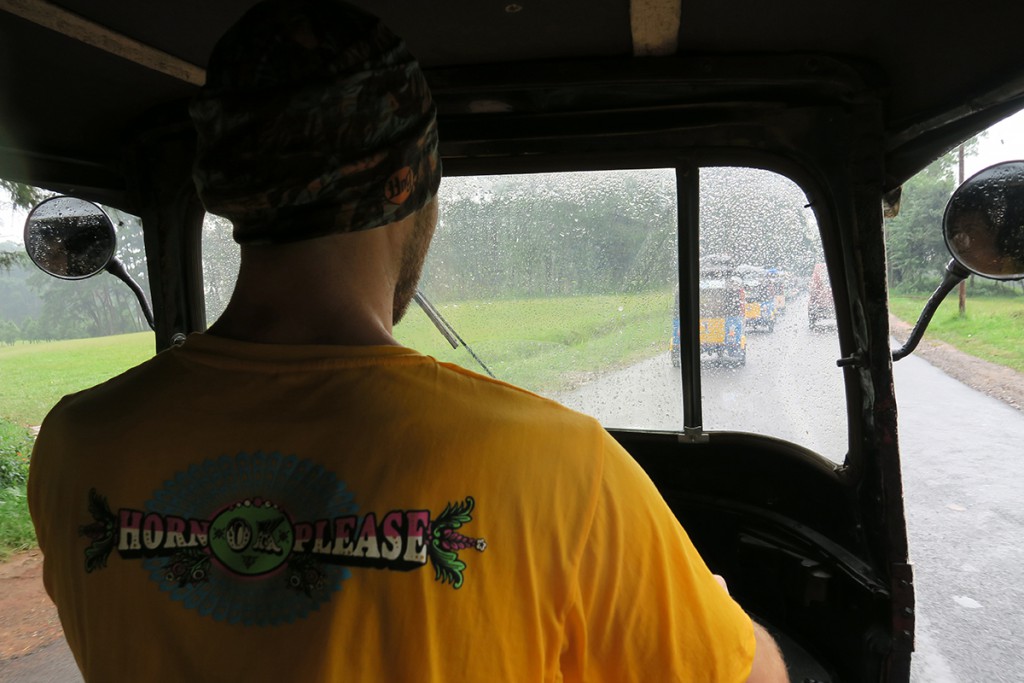
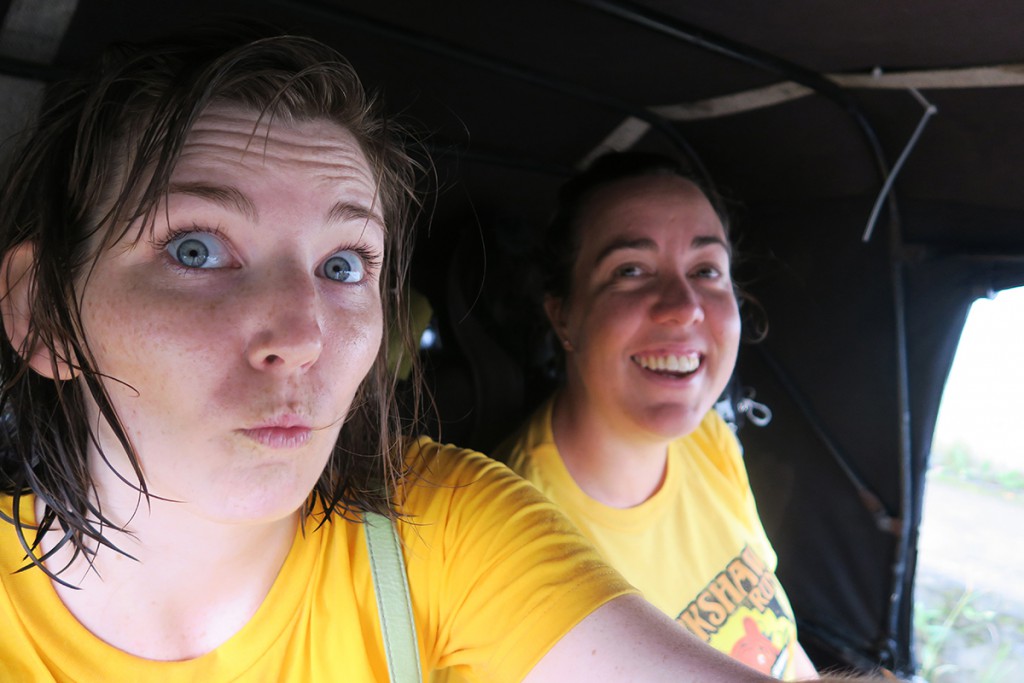
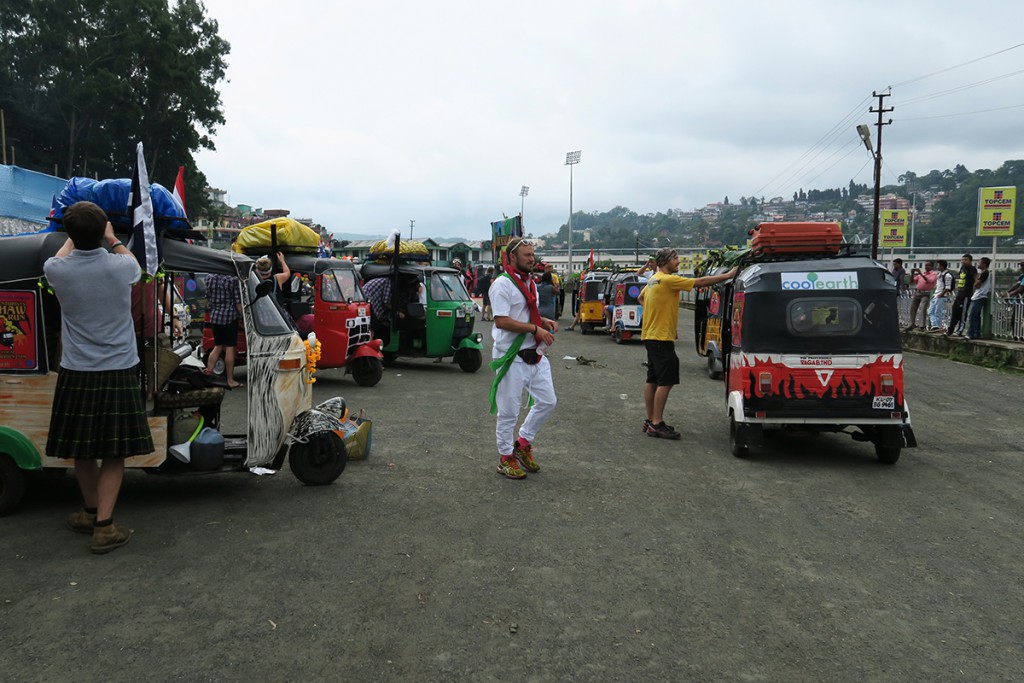

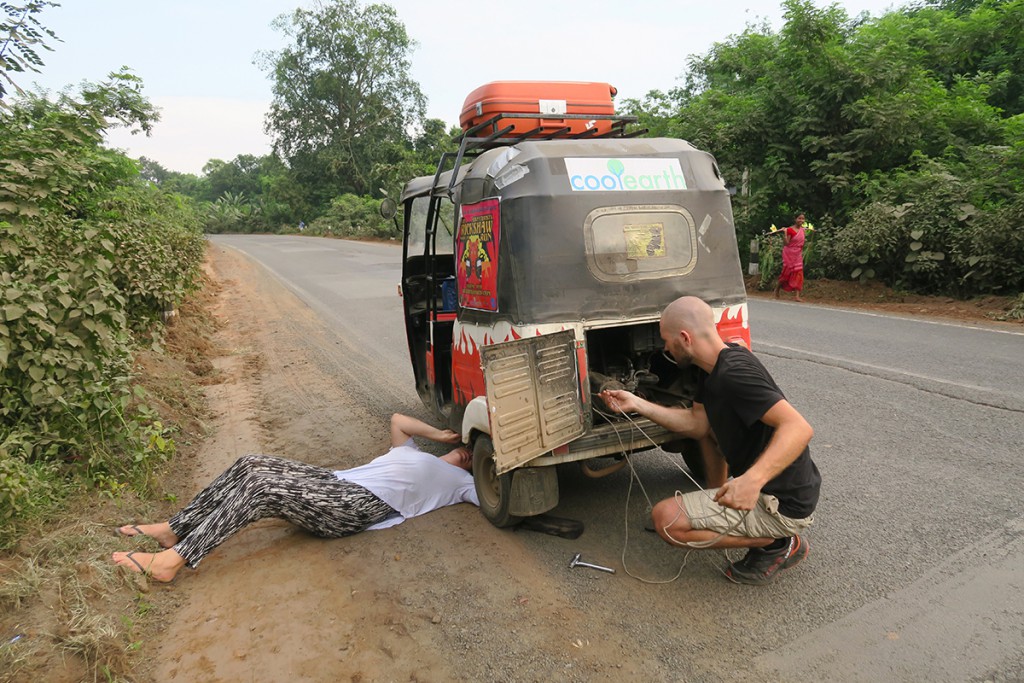
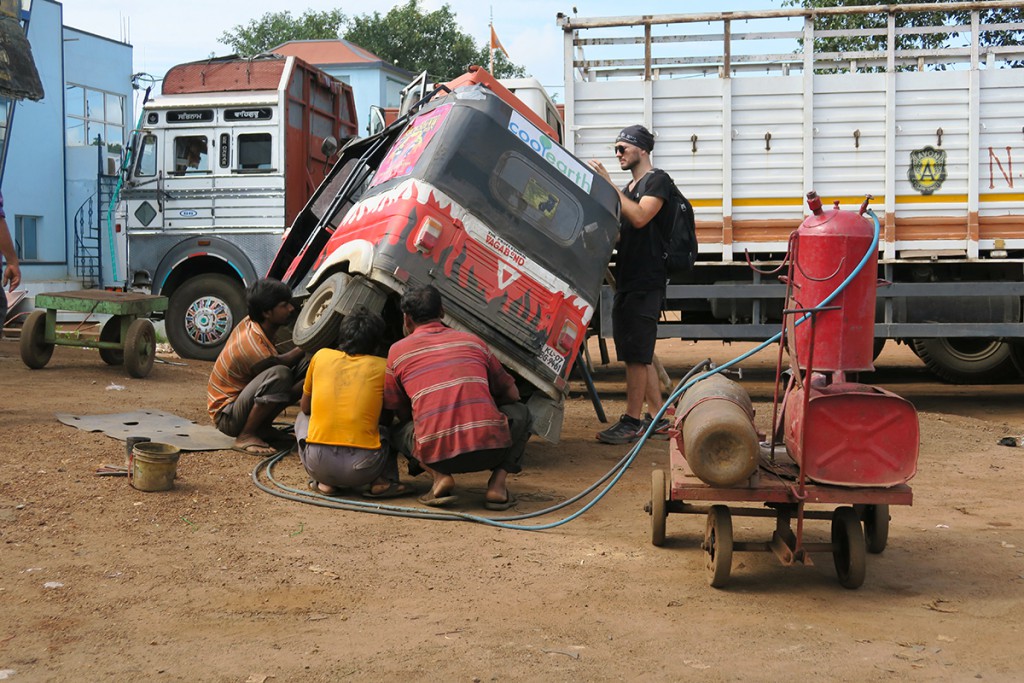
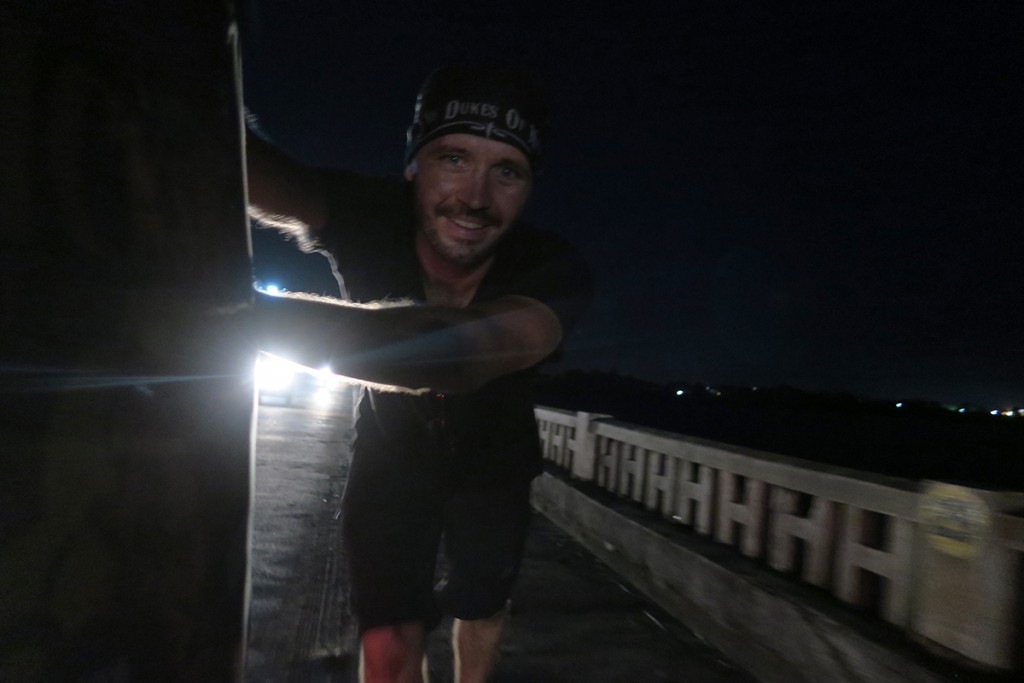
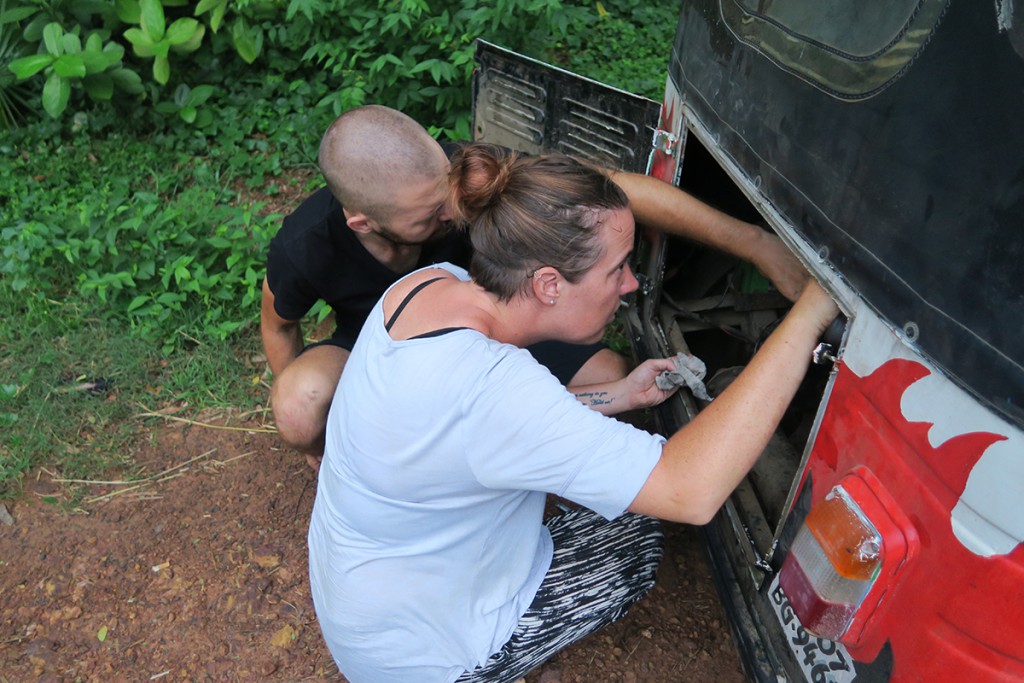
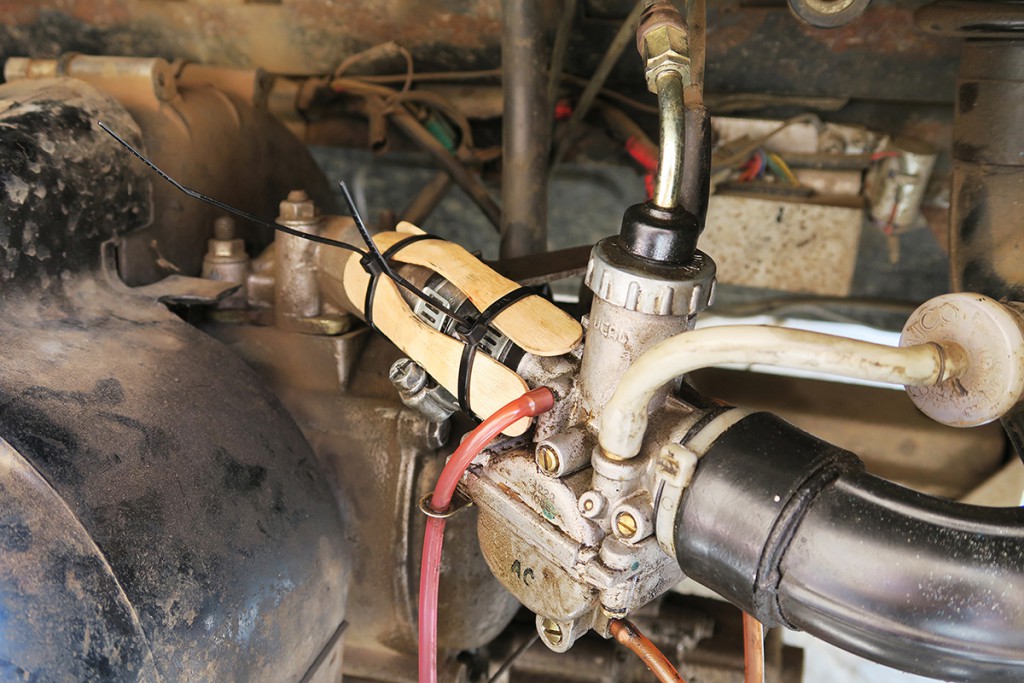
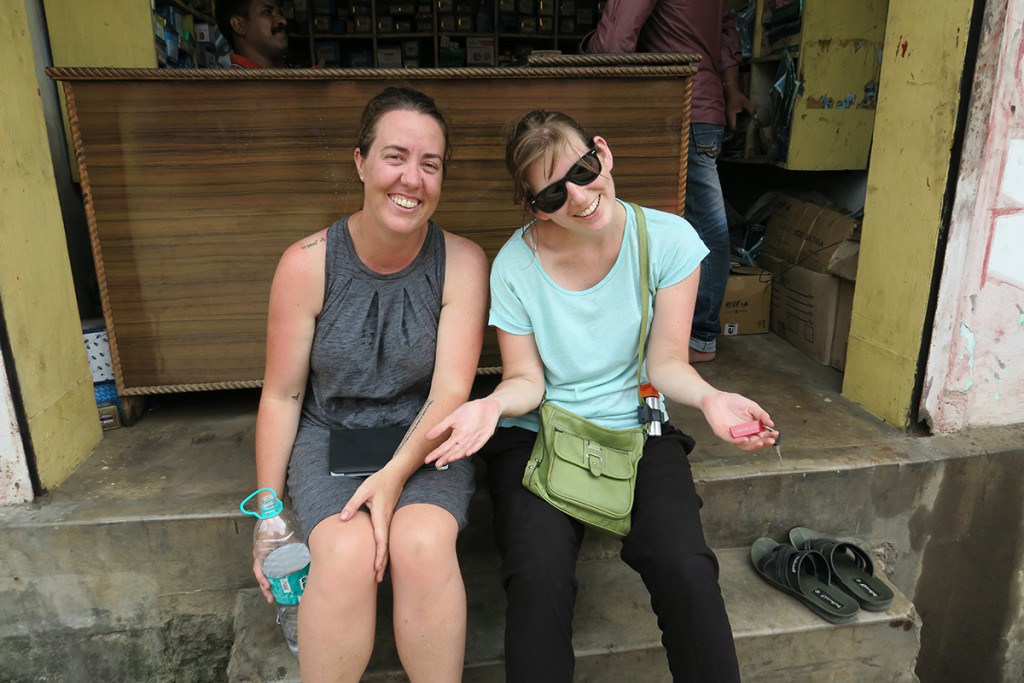
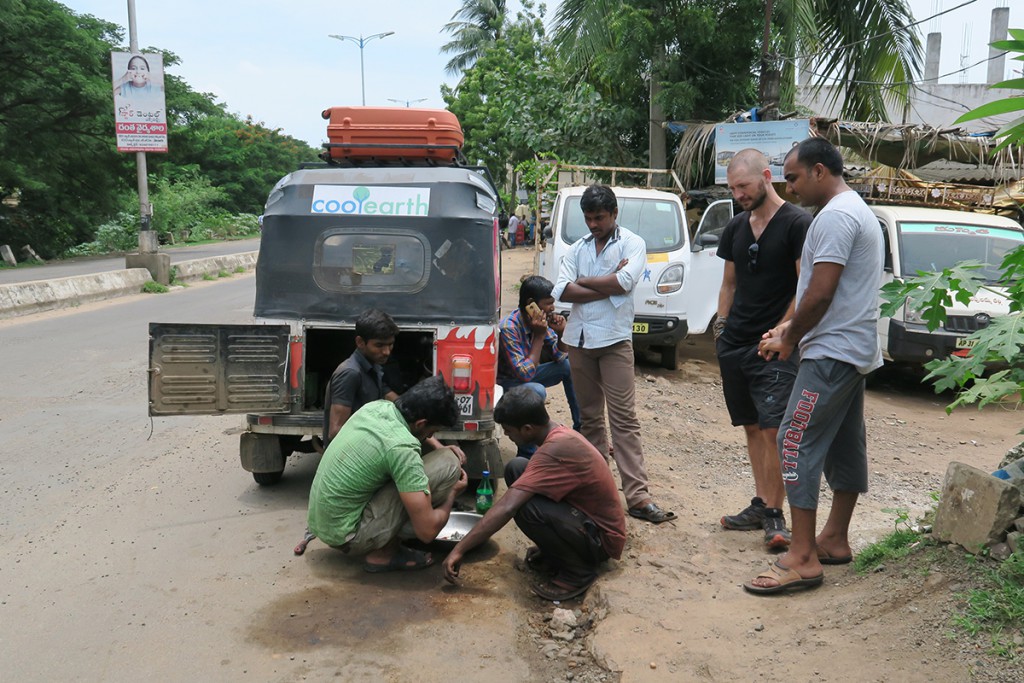
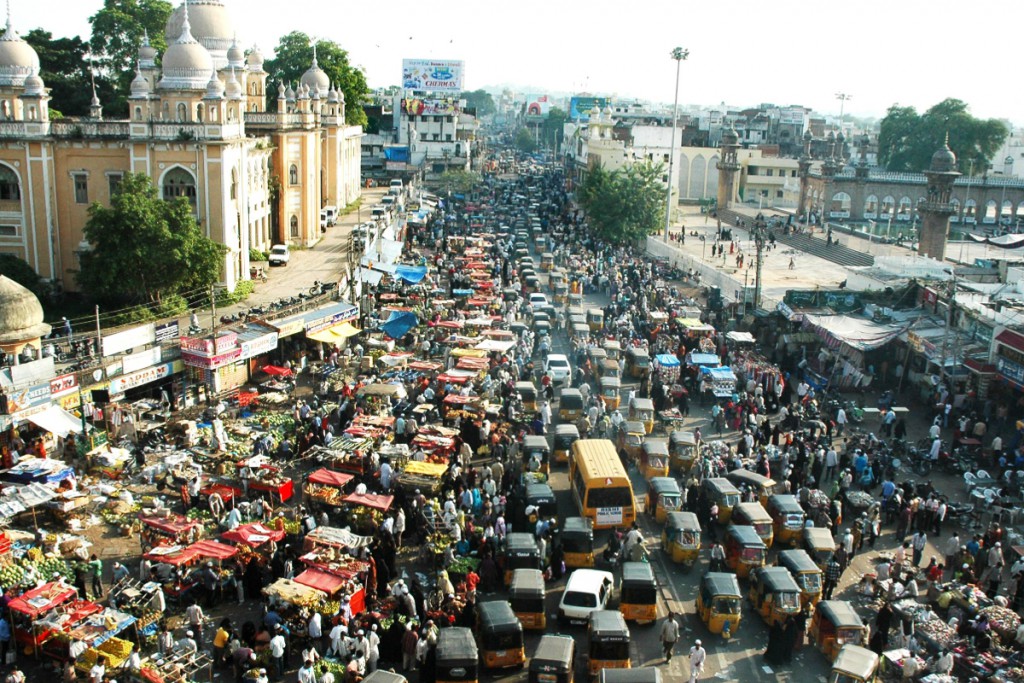
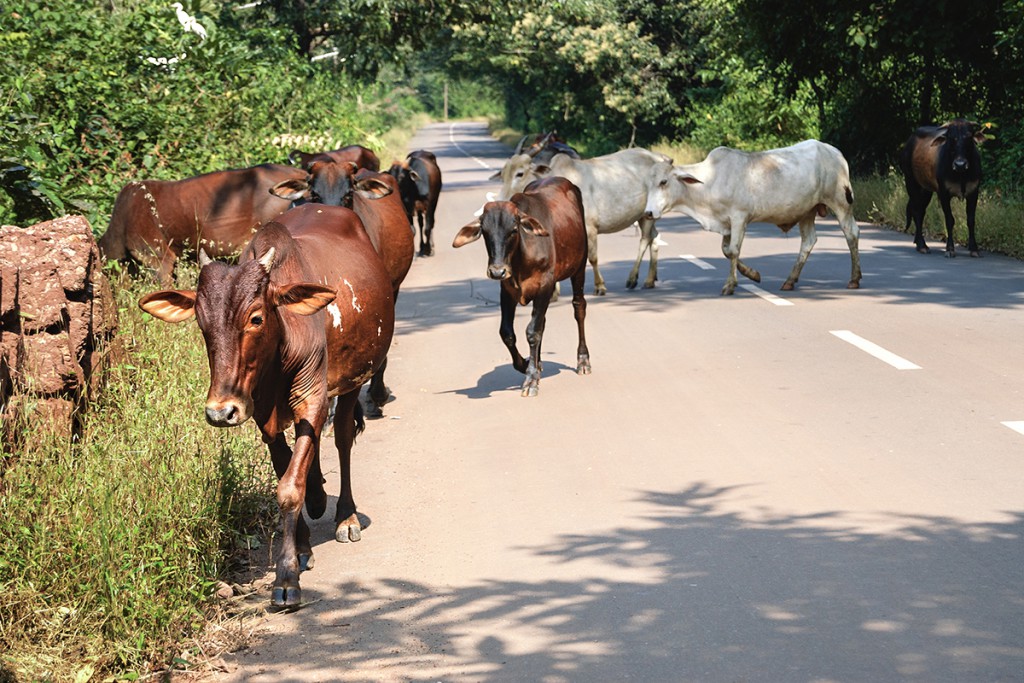
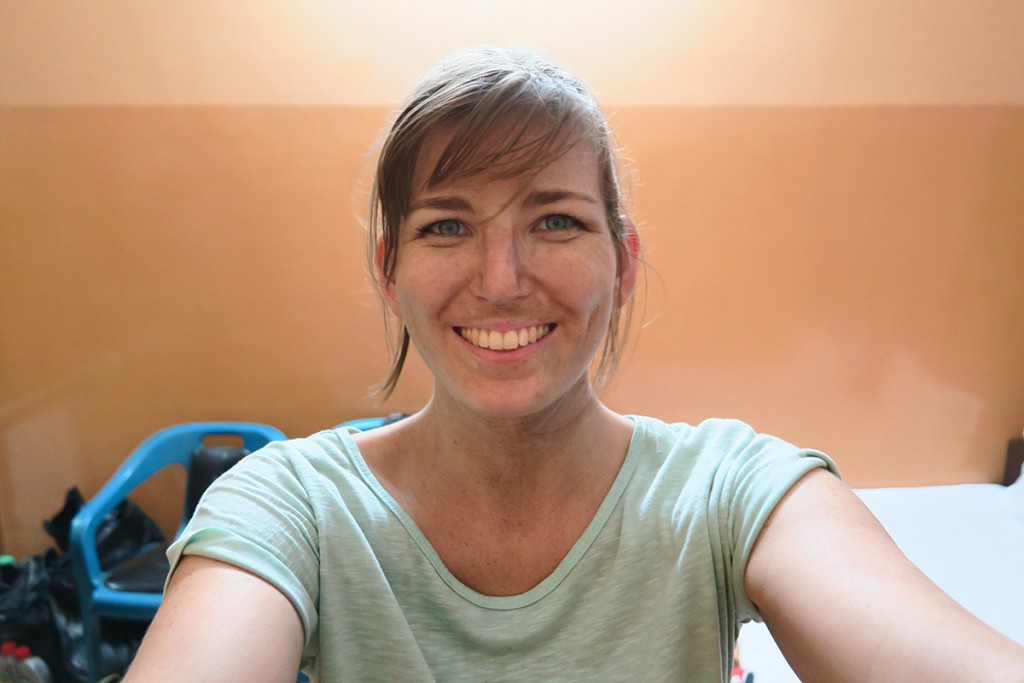
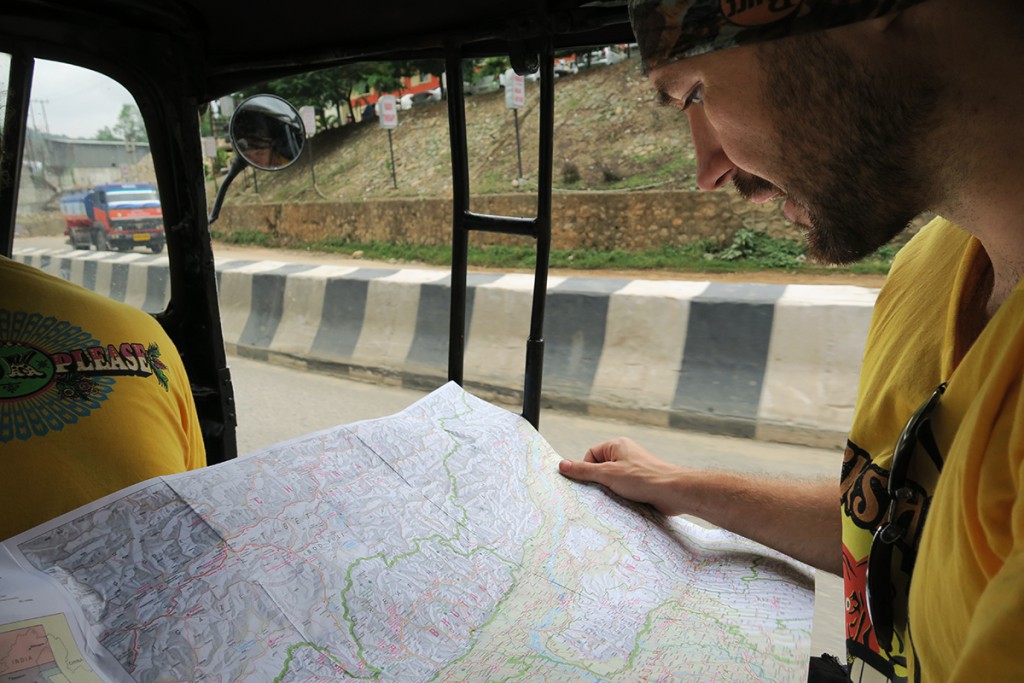
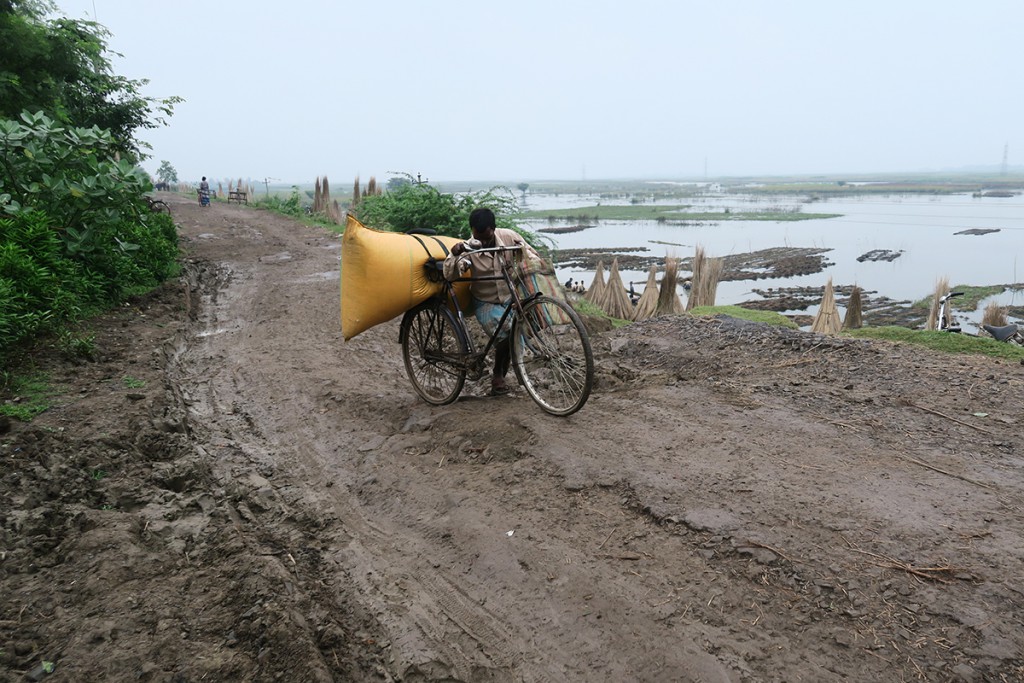
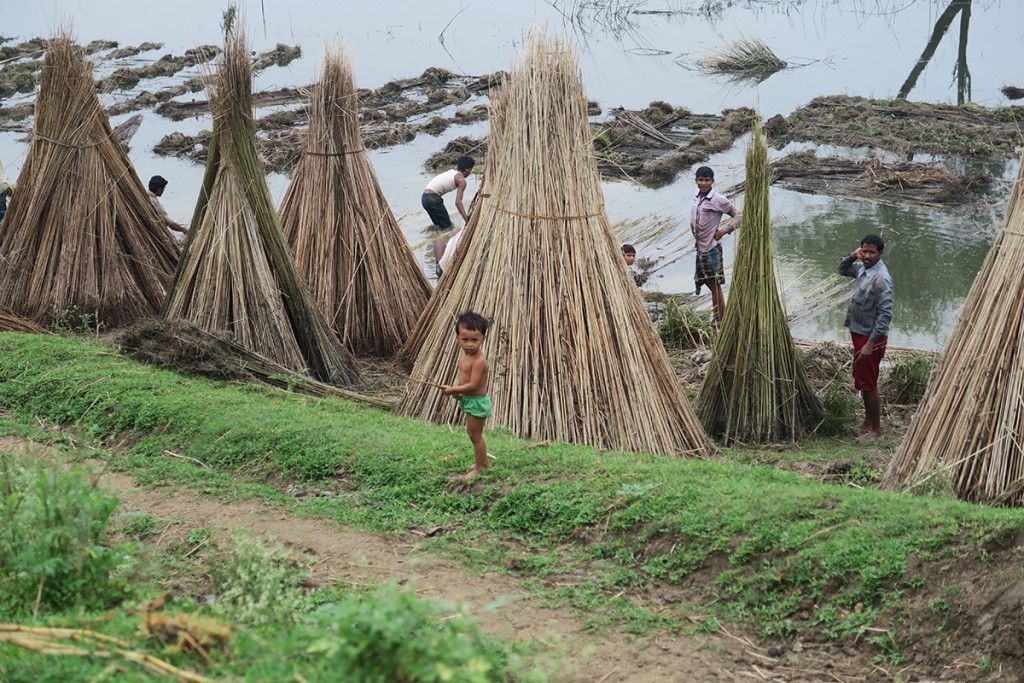
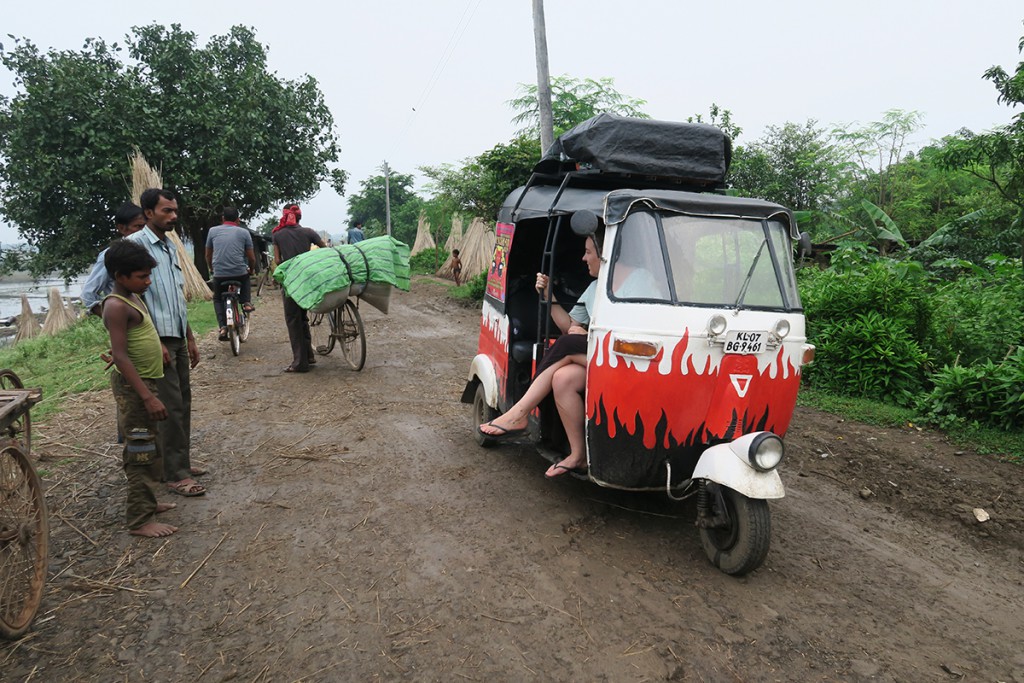
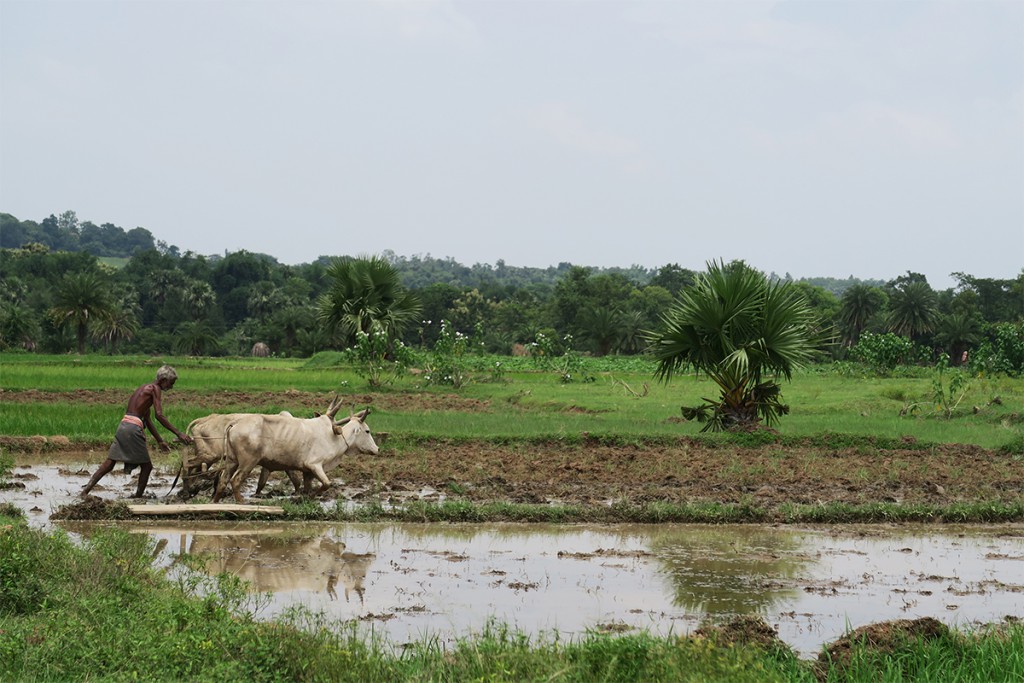
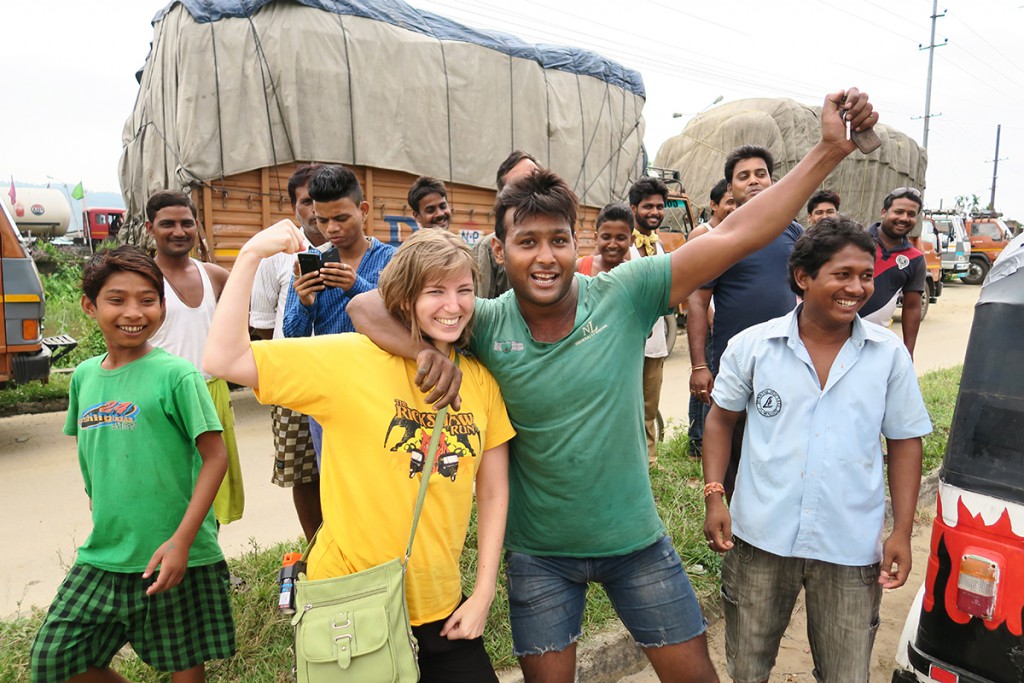
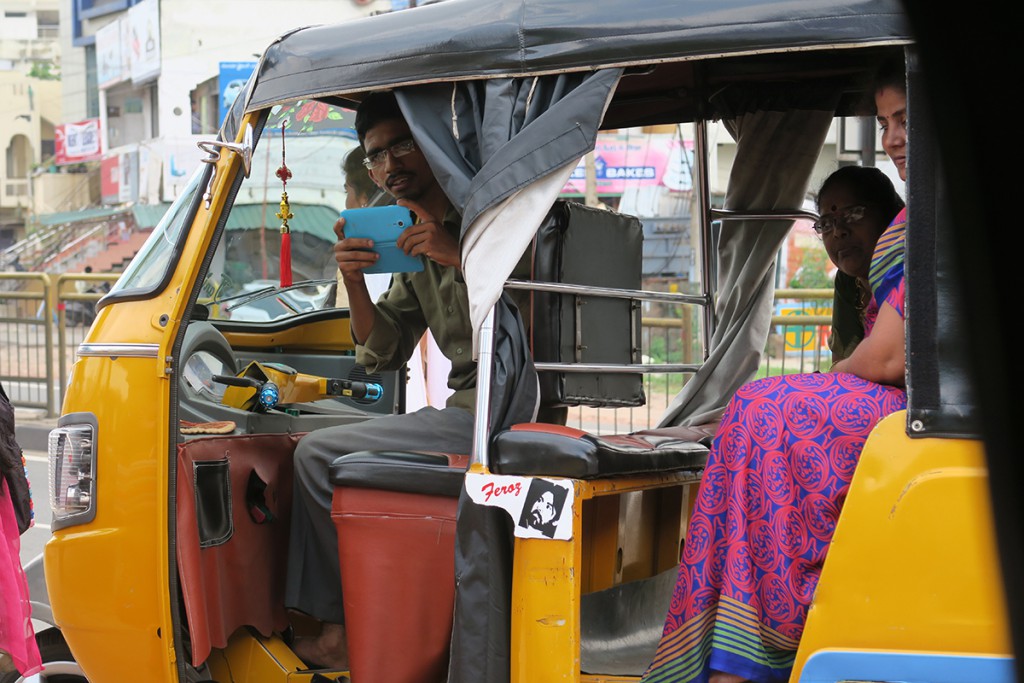
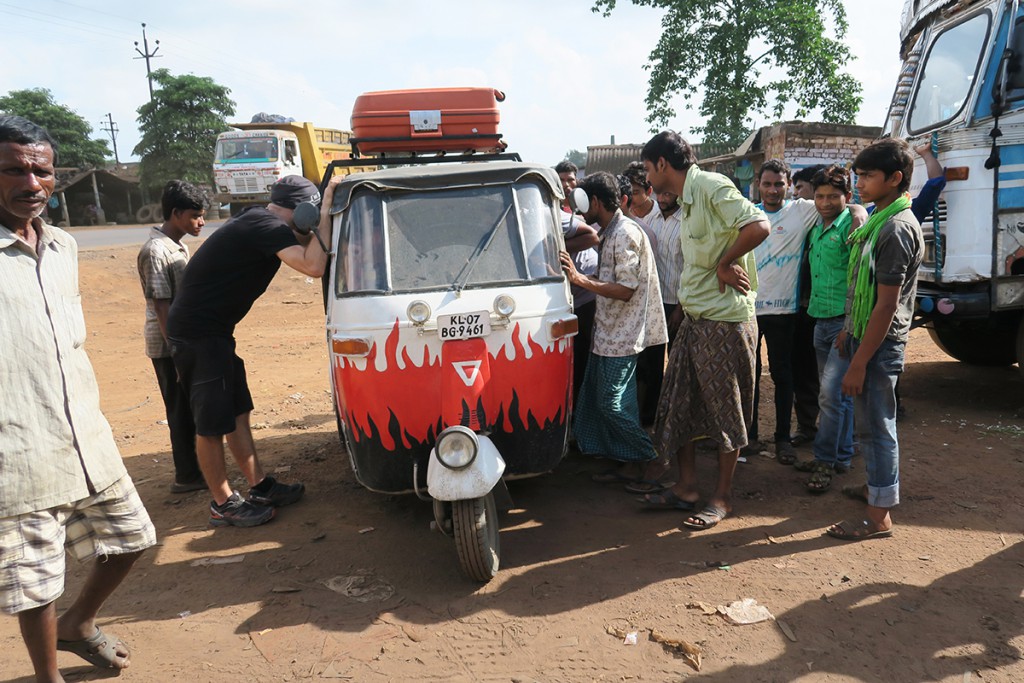
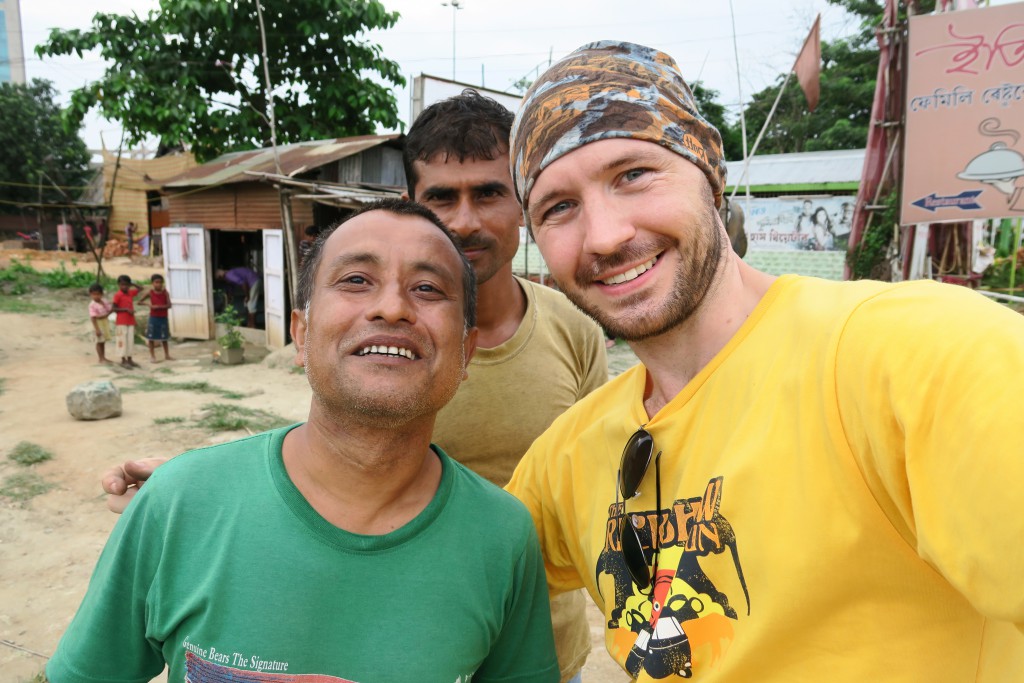
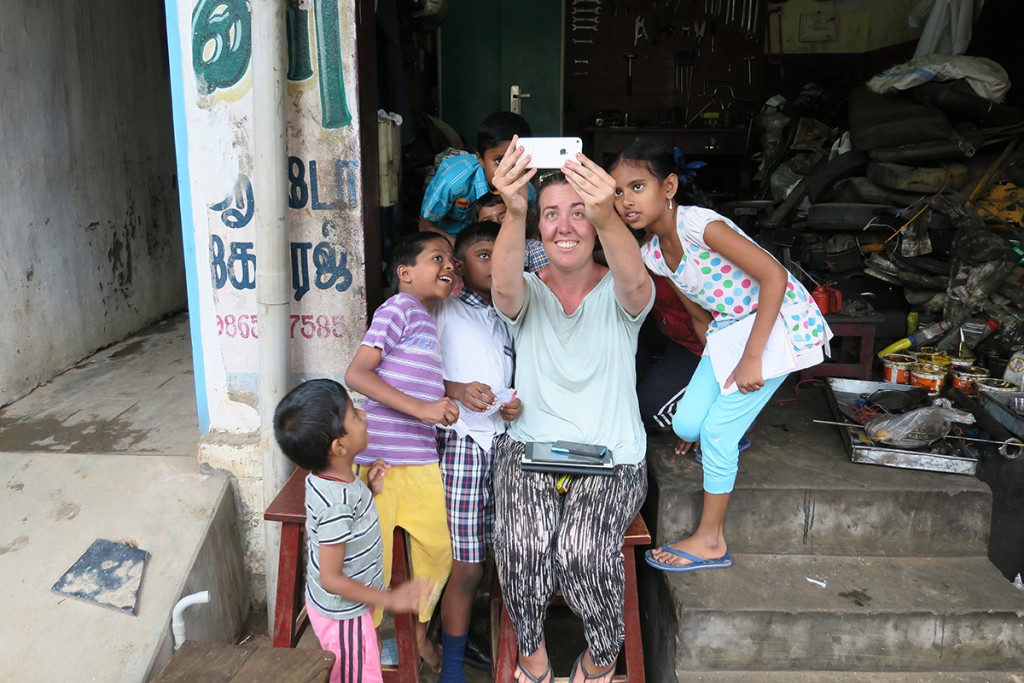
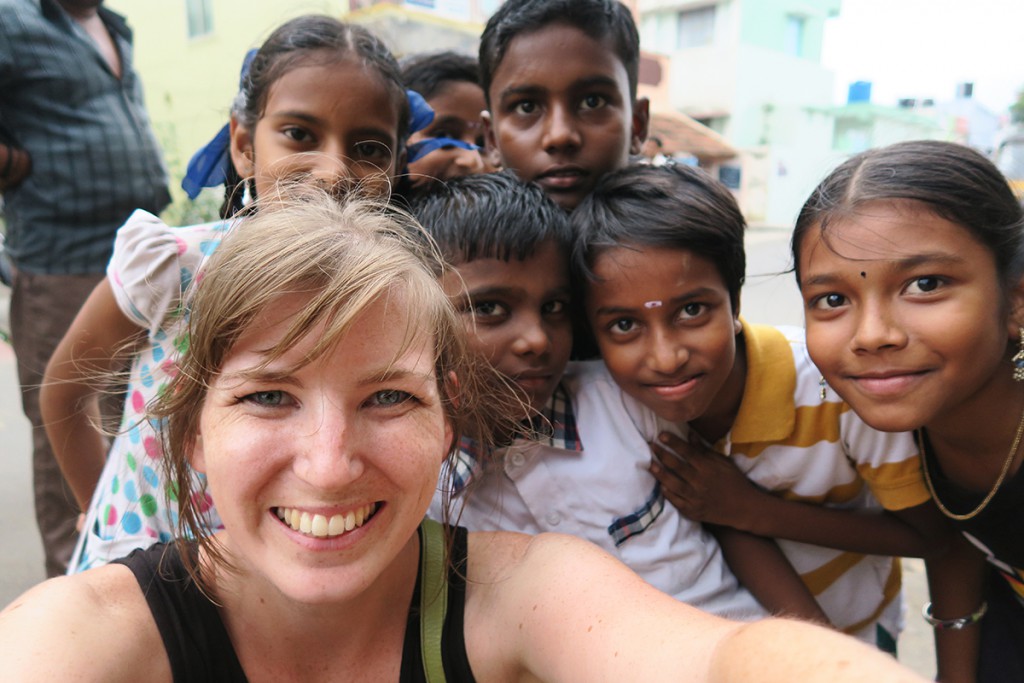
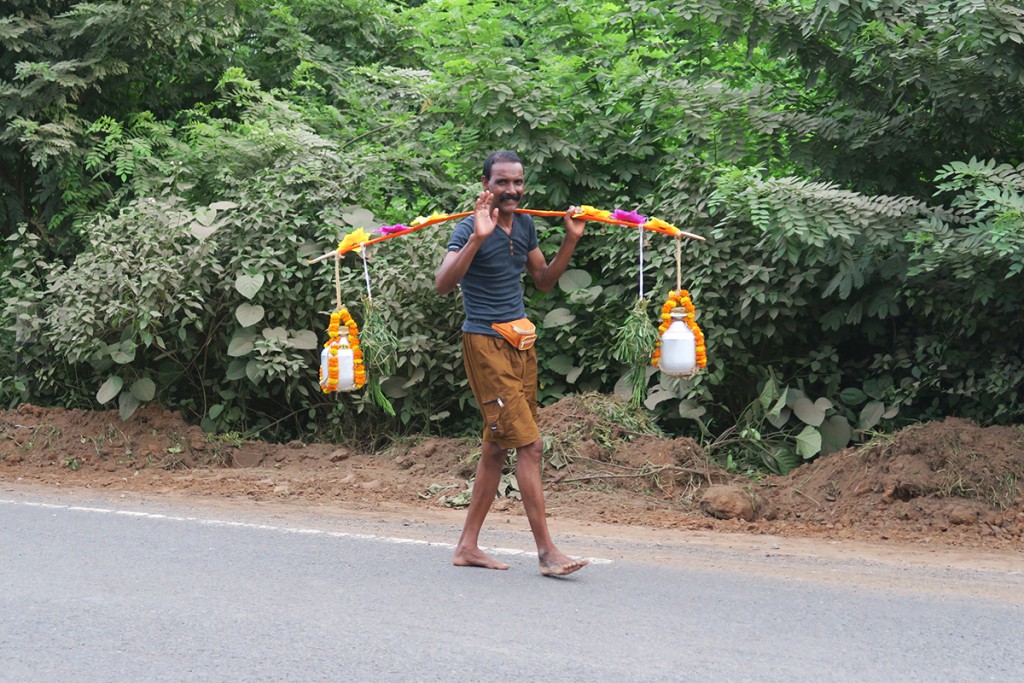
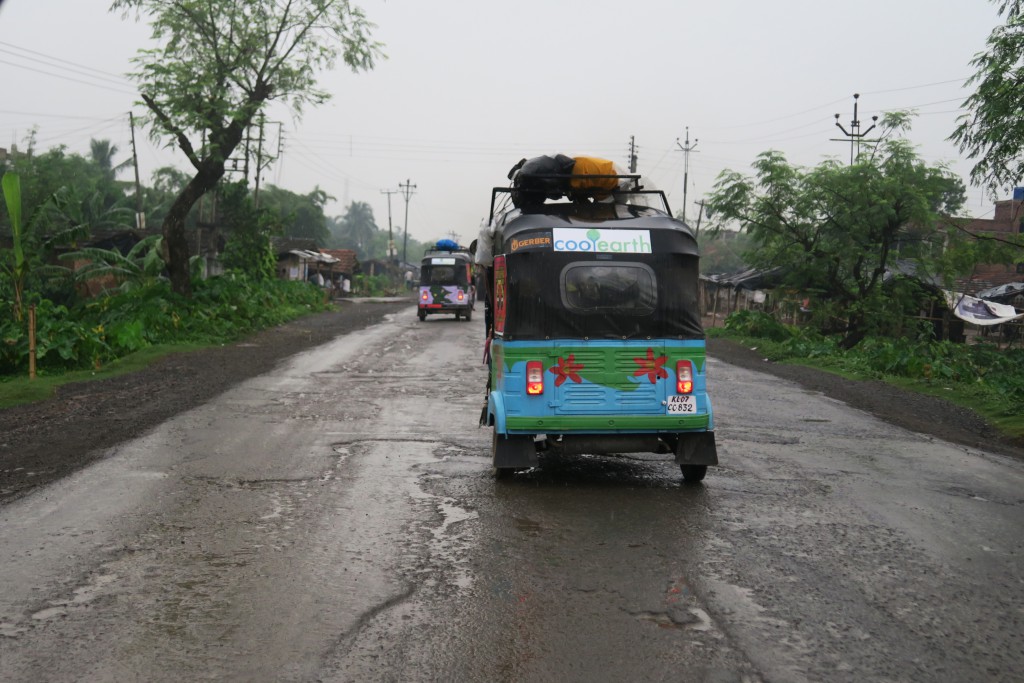
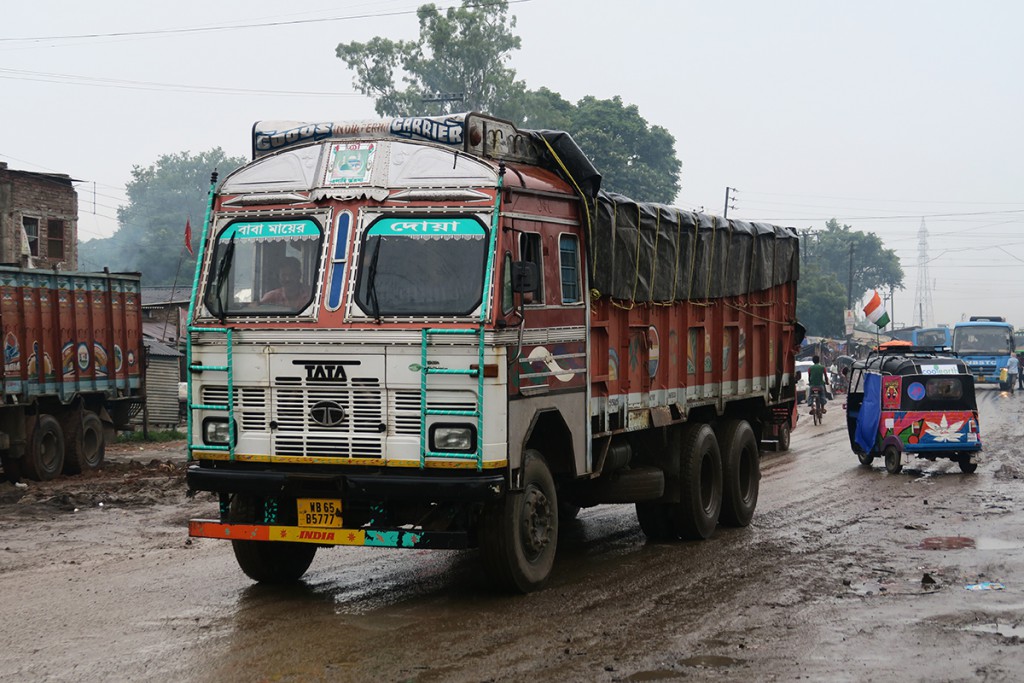
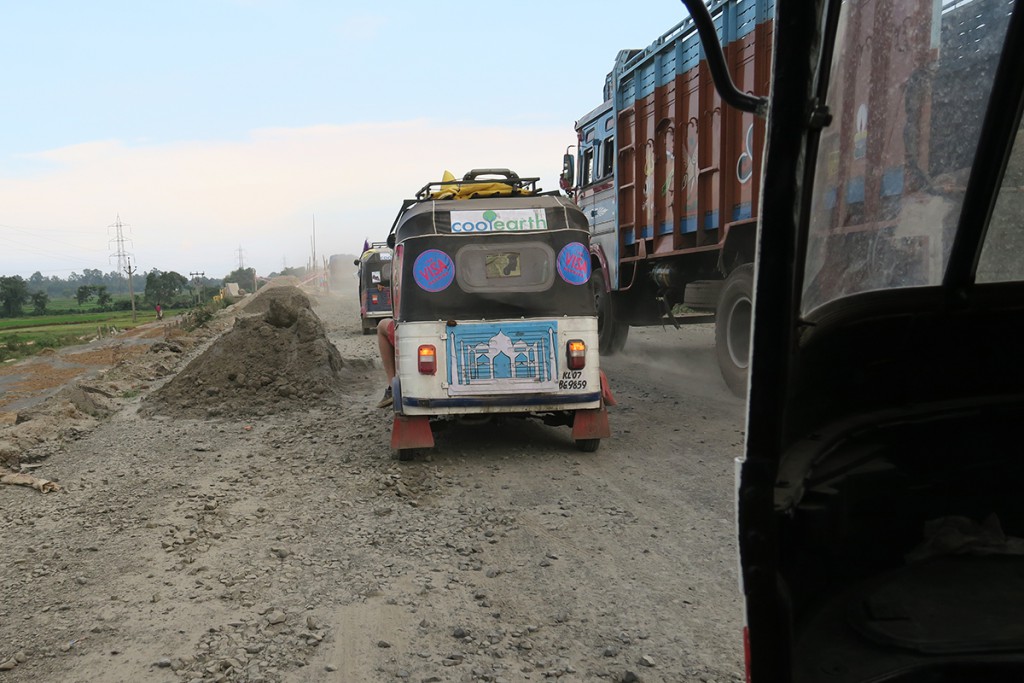
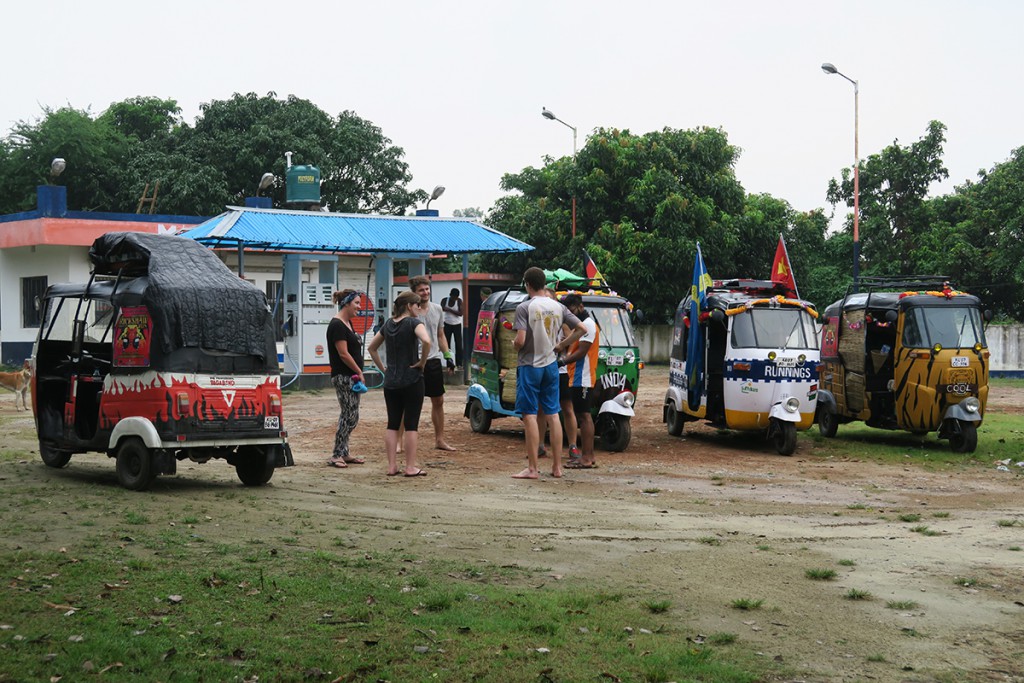
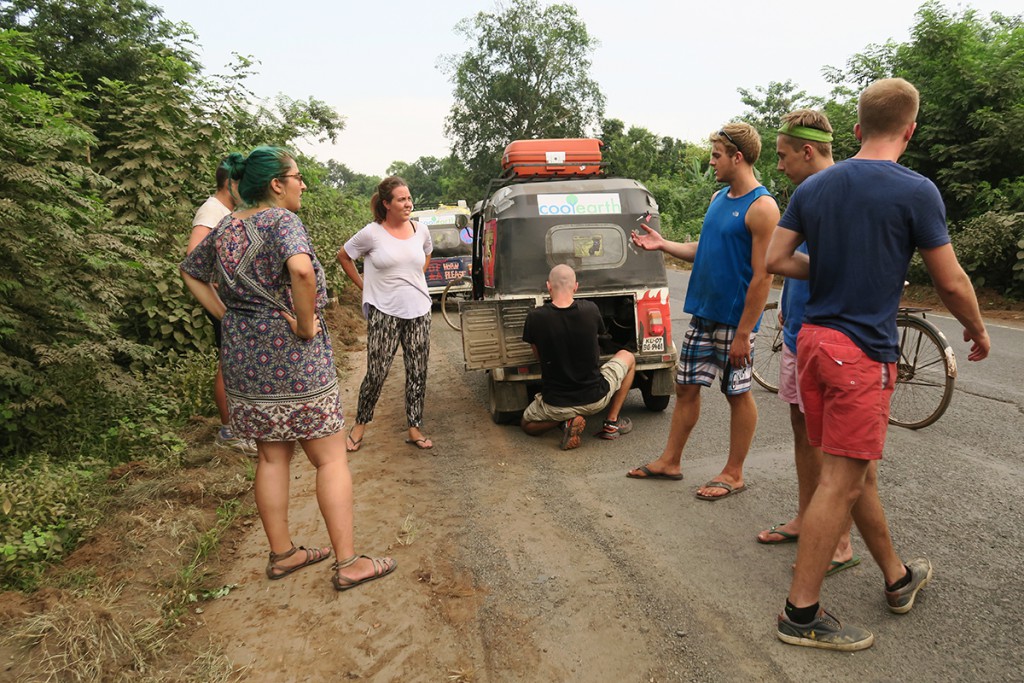
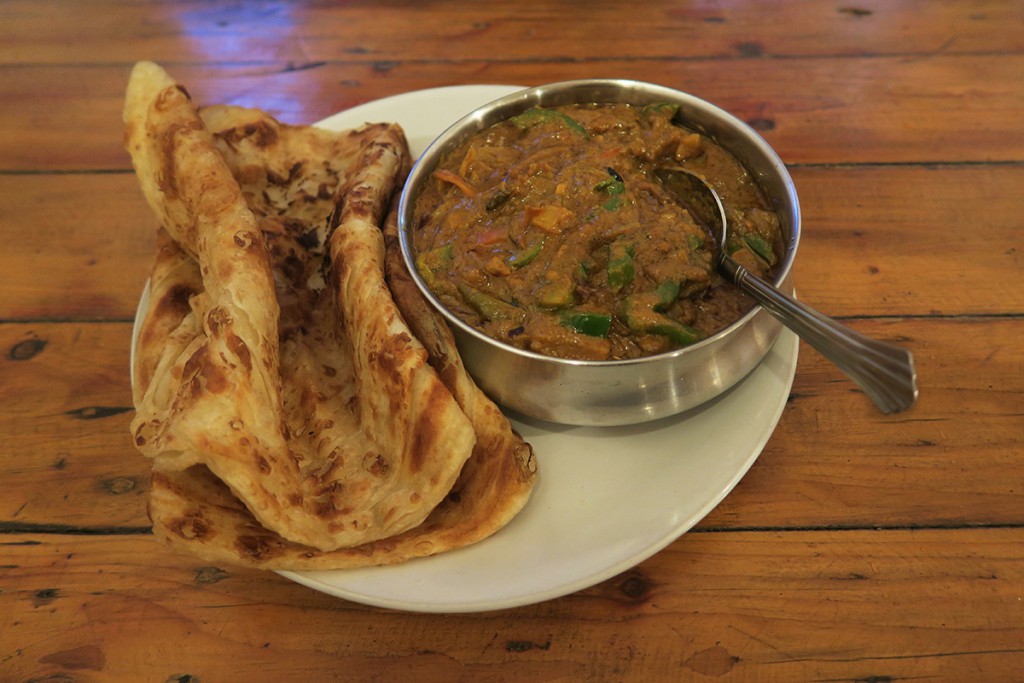
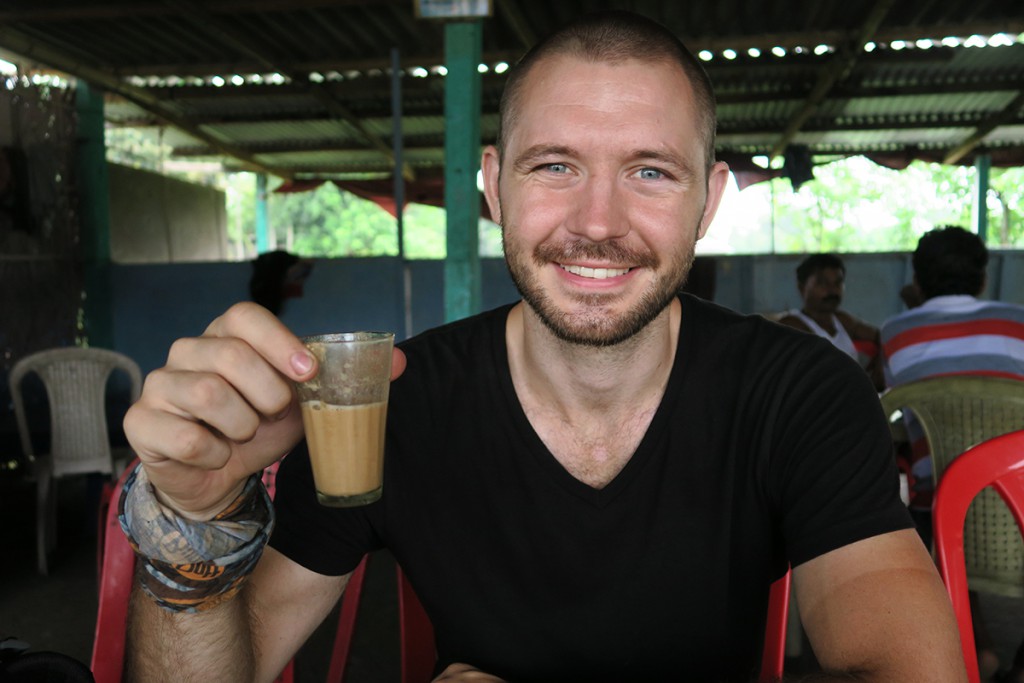
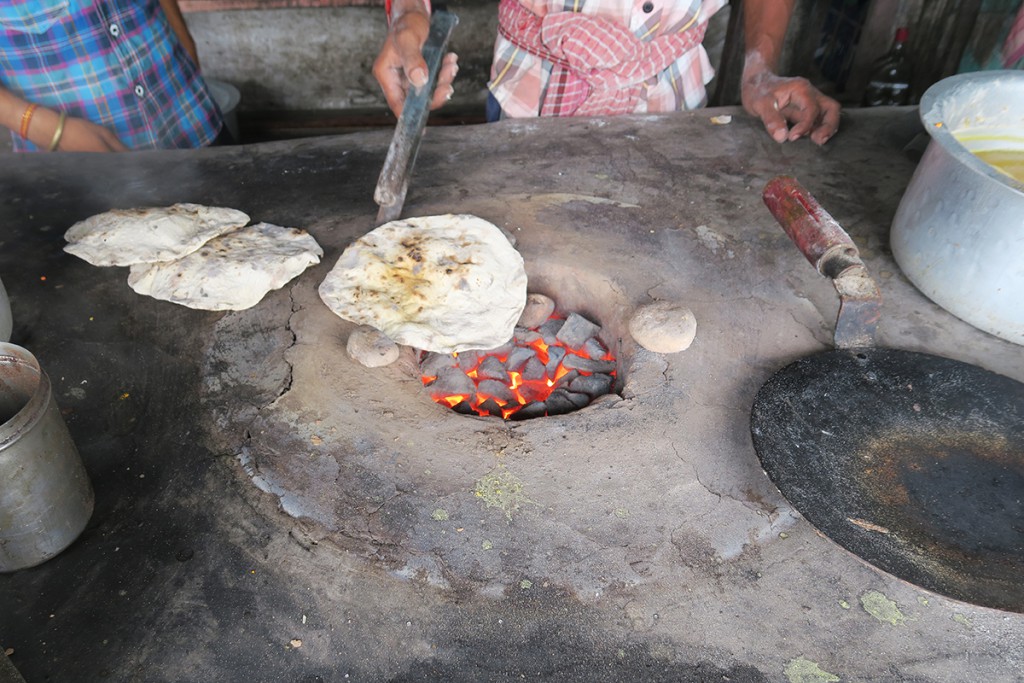
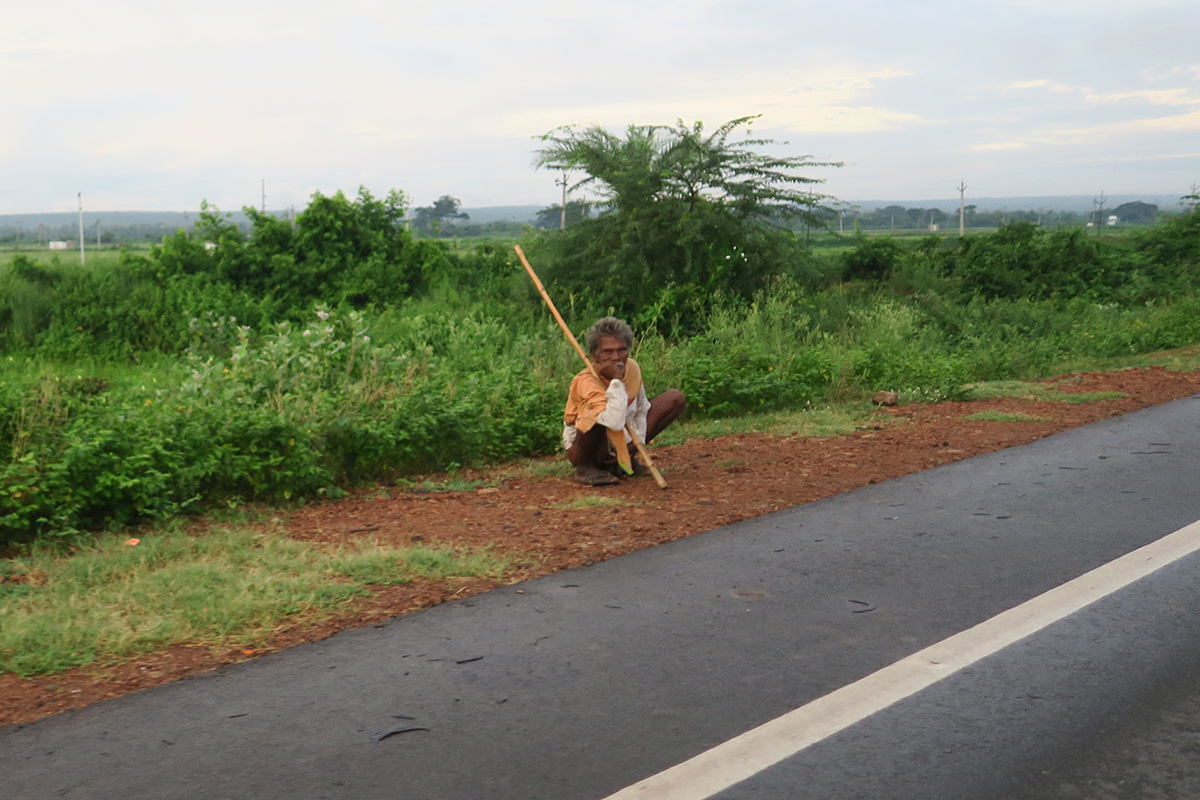

Genuine question: how safe did you feel? I’ve travelled around India before but not alone and never – so far – off the beaten track, but this adventure is calling to me.
Hey, Kat.
We never felt like we were in danger of being attacked but, at times, we were swarmed by people who wanted to touch us. As strange as that sounds, it happened on the daily. It was more of a problem for my wife and sister than it was for me, but it was uncomfortable all around 🙂
What a great story to read on a Sunday morning! Totally mad and insanely hilarious. Thanks so much for not peppering it with affiliate links and sales attempts too! Easy and fun to read!
I’m glad that you enjoyed the post, Jane! Thanks for the feedback 🙂
What an awesome, funny, interesting, hilarious and scary account of your time in India. Wonderfully written! I take my hat off to the three of you, for not only enduring and surviving this major challenge, but for embracing it and making it a trip of a lifetime, with memories that will last forever and a shared experience that will make you laugh and cry every time you relive it. Talk about living life to the fullest!!
Thanks, Heike. It’s definitely an adventure that we’ll remember for the rest of our lives 🙂
Gah! Lets go back!
I know, right!